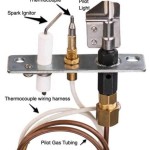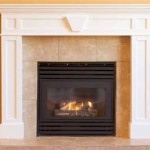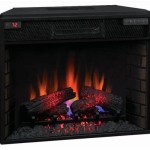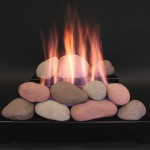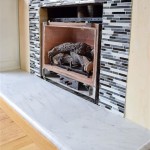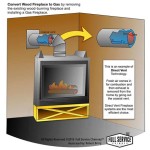White Gas Fireplaces: Understanding Their Operation, Benefits, and Considerations
White gas fireplaces present a heating and aesthetic solution for residential and commercial spaces. These appliances operate on a highly refined, volatile fuel – white gas, also known as naphtha or Coleman fuel. The use of white gas offers distinct advantages and disadvantages compared to other fuel sources like natural gas, propane, or electricity. Understanding the operational principles, benefits, safety protocols, and maintenance requirements is crucial for responsible ownership and use of a white gas fireplace.
The fundamental operation of a white gas fireplace relies on the principles of combustion. White gas, in its liquid form, is fed from a fuel tank to a burner assembly. This assembly usually contains a valve to regulate the fuel flow and a nozzle to atomize the liquid into a fine mist. The atomized fuel is then mixed with air, creating a combustible mixture. An ignition source, such as a spark igniter or a pilot light, initiates the combustion process. The resulting flame heats the surrounding environment, providing warmth to the space. The combustion process also produces exhaust gases, which must be vented to the outside atmosphere through a chimney or vent system.
Key Point 1: Advantages of White Gas Fireplaces
White gas fireplaces offer several benefits compared to other fireplace types. One significant advantage is their portability and independence from fixed fuel lines. Unlike natural gas or propane fireplaces, which require a connection to a gas utility, white gas fireplaces can be used in locations where these connections are unavailable. They rely on a self-contained fuel supply, making them suitable for cabins, workshops, or outdoor settings.
Another advantage is the high heat output achievable with white gas. White gas boasts a high energy density compared to other fuels. This means that a relatively small amount of fuel can generate a significant amount of heat. This characteristic makes white gas fireplaces effective at quickly warming up a space, particularly in colder environments. The rapid heat generation can be a significant advantage in situations where immediate warmth is desired.
Furthermore, white gas fireplaces can offer a more controllable flame and heat output compared to wood-burning fireplaces. The fuel valve on the burner assembly allows users to precisely adjust the flame height and heat intensity. This control can lead to greater energy efficiency and more comfortable heating, as the user can match the heat output to the specific needs of the space. This level of control is often difficult to achieve with traditional wood-burning fireplaces, where the burning rate is influenced by factors such as wood type and air supply.
White gas fireplaces can also be relatively clean-burning when properly maintained and operated. High-quality white gas contains minimal impurities, resulting in cleaner combustion compared to fuels like kerosene or diesel. This cleaner combustion reduces the emission of harmful air pollutants, such as particulate matter and sulfur dioxide. However, regular maintenance, including cleaning the burner assembly and ensuring proper ventilation, is crucial to maintaining optimal combustion efficiency and minimizing emissions.
Key Point 2: Disadvantages and Safety Considerations
Despite their advantages, white gas fireplaces also present certain disadvantages and safety considerations that users must be aware of. One major concern is the flammability and volatility of white gas. White gas is a highly flammable liquid that can easily ignite if exposed to a spark or open flame. It also has a high vapor pressure, meaning that it readily evaporates into a flammable vapor. This characteristic increases the risk of fire or explosion if white gas is handled improperly or stored in a poorly ventilated area. Users must exercise extreme caution when filling the fuel tank, avoiding spills and ensuring that the area is well-ventilated to prevent the accumulation of flammable vapors.
Another disadvantage is the potential for carbon monoxide (CO) poisoning. Carbon monoxide is a colorless, odorless, and toxic gas produced by the incomplete combustion of fuels, including white gas. If a white gas fireplace is not properly vented or if the combustion process is incomplete due to a lack of oxygen, carbon monoxide can accumulate in the indoor environment. Exposure to high concentrations of carbon monoxide can lead to serious health problems, including headache, dizziness, nausea, and even death. It is imperative to install and maintain a carbon monoxide detector in any space where a white gas fireplace is used. Regular inspection of the vent system is also vital to ensure proper exhaust of combustion gases.
The availability and cost of white gas can also be a limiting factor in some areas. White gas is not as readily available as fuels like natural gas or propane, and it tends to be more expensive per unit of energy. Users may need to purchase white gas from specialty stores or outdoor equipment retailers. The cost of white gas can fluctuate depending on market conditions and transportation costs, which can impact the overall operating cost of the fireplace.
White gas fireplaces generally require more hands-on maintenance compared to other types of fireplaces. The burner assembly can become clogged with residue over time, affecting combustion efficiency and flame quality. Regular cleaning of the burner assembly is necessary to ensure proper operation. The fuel tank and fuel lines also need to be inspected periodically for leaks or damage. Users should follow the manufacturer's instructions for maintenance procedures and use appropriate cleaning agents to avoid damaging the fireplace components.
Key Point 3: Proper Installation, Operation, and Maintenance
Proper installation is crucial for the safe and efficient operation of a white gas fireplace. The fireplace should be installed according to the manufacturer's instructions and in accordance with local building codes. The installation location should provide adequate ventilation and clearance from combustible materials. A qualified technician should perform the installation to ensure that all connections are secure and that the vent system is properly installed and functioning.
Operating procedures should always be followed meticulously. Before lighting the fireplace, users should ensure that the fuel tank is properly filled and that there are no leaks. The area should be well-ventilated to prevent the accumulation of flammable vapors. When lighting the fireplace, users should follow the manufacturer's instructions for ignition and flame adjustment. Never leave the fireplace unattended while it is in operation, and always turn it off when leaving the space or going to sleep.
Regular maintenance is essential for ensuring the longevity and safe operation of a white gas fireplace. The burner assembly should be cleaned periodically to remove any accumulated residue. The fuel tank and fuel lines should be inspected for leaks or damage. The vent system should be inspected to ensure that it is free from obstructions and that it is properly exhausting combustion gases. Users should consult the manufacturer's instructions for specific maintenance recommendations and use appropriate cleaning agents and tools.
Selecting the appropriate type of white gas is also vital. Only use white gas specifically designed for use in appliances. Other fuels, such as gasoline or kerosene, should never be used, as they can damage the fireplace and create a safety hazard. Store white gas in a tightly sealed container in a cool, well-ventilated area, away from heat, sparks, or open flames. Keep white gas out of the reach of children and pets.
Understanding the nuances of white gas fireplaces, from their operational advantages to their safety requirements, empowers users to make informed decisions and operate these appliances responsibly. Adhering to safety guidelines, performing regular maintenance, and being aware of the potential hazards associated with white gas are crucial for enjoying the warmth and ambiance of a white gas fireplace safely and efficiently.

White Mountain Hearth 36 Tahoe Deluxe Clean Face Fireplace Fine S Gas

Buy The Pureglow Drayton Limestone Fireplace Package With Chelsea He Gas Fire Direct Fireplaces

Duluth Forge Dual Fuel Ventless Gas Fireplace 26 000 Btu Remote Control Antique White Finish 170105 The Home Depot

White Mountain Hearth By Empire Vent Free Gas Fireplace Vail 36 Premium

Duluth Forge Fdi32r M Aw Full Size Dual Fuel Ventless Fireplace 32 000 Btu Remote Control Antique White Finish 179200 The Home Depot

Superior Vre4236 36 Outdoor Indoor Firebox White Herringbone Vre Fireplaces Usa

Duluth Forge Dual Fuel Ventless Gas Fireplace 32 000 Btu T Stat Control Antique White Finish Com

Belgrade Polar White Marble Fireplace With Gas Fire Direct Fireplaces

Duluth Forge 55 In Black Ventless Natural Or Liquid Propane Gas Fireplace The Fireplaces Department At Com

White Mountain Hearth Vented Gas Log Set Review Fireplaces Direct Learning Center
Related Posts

